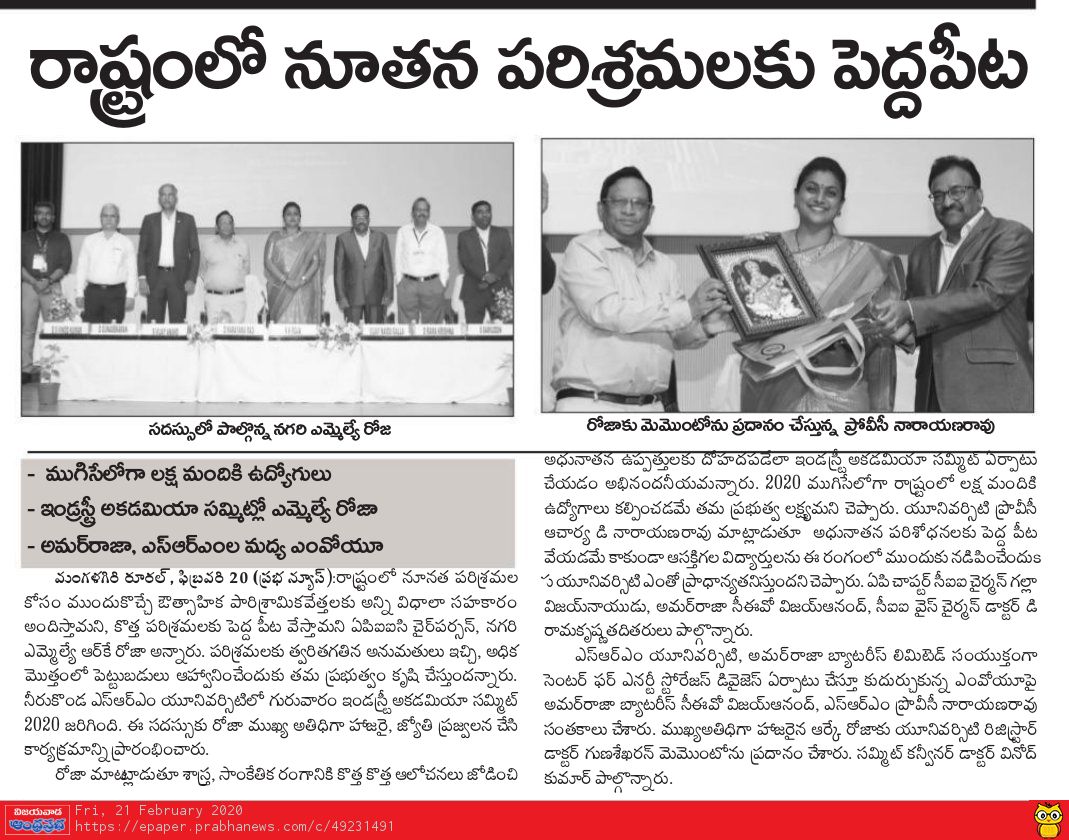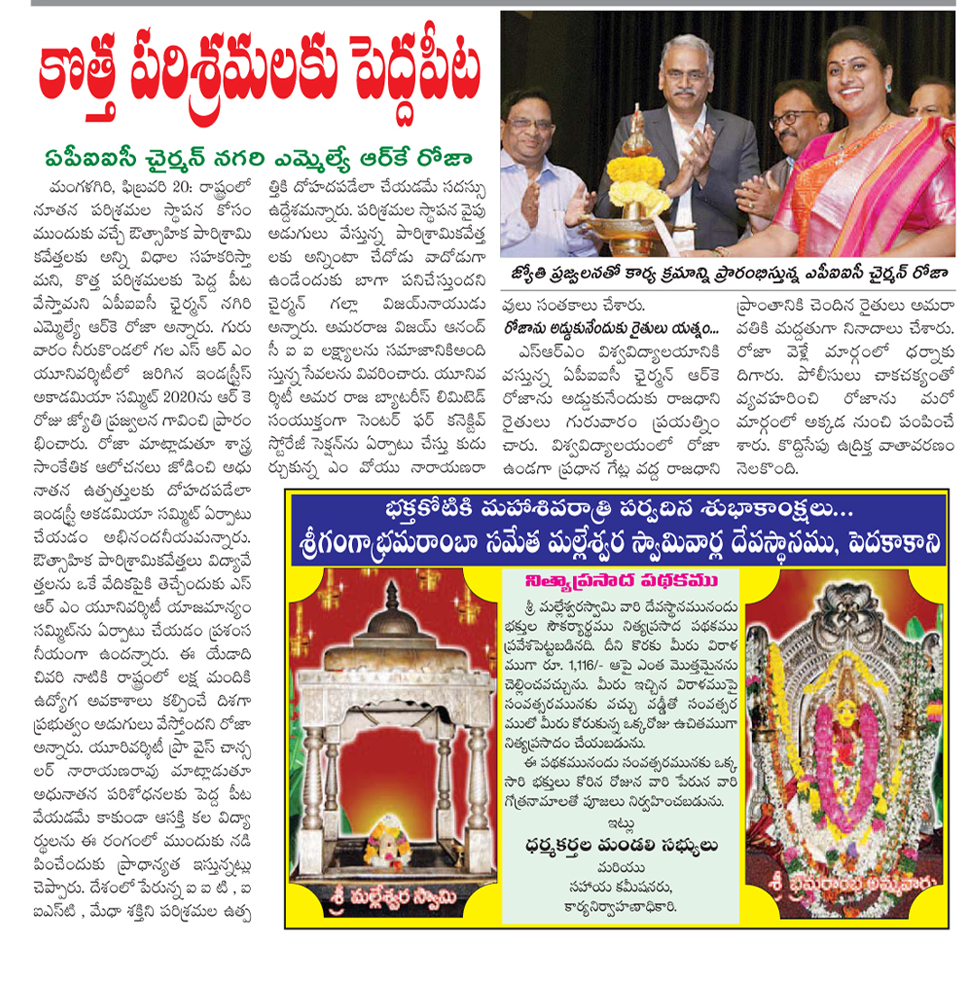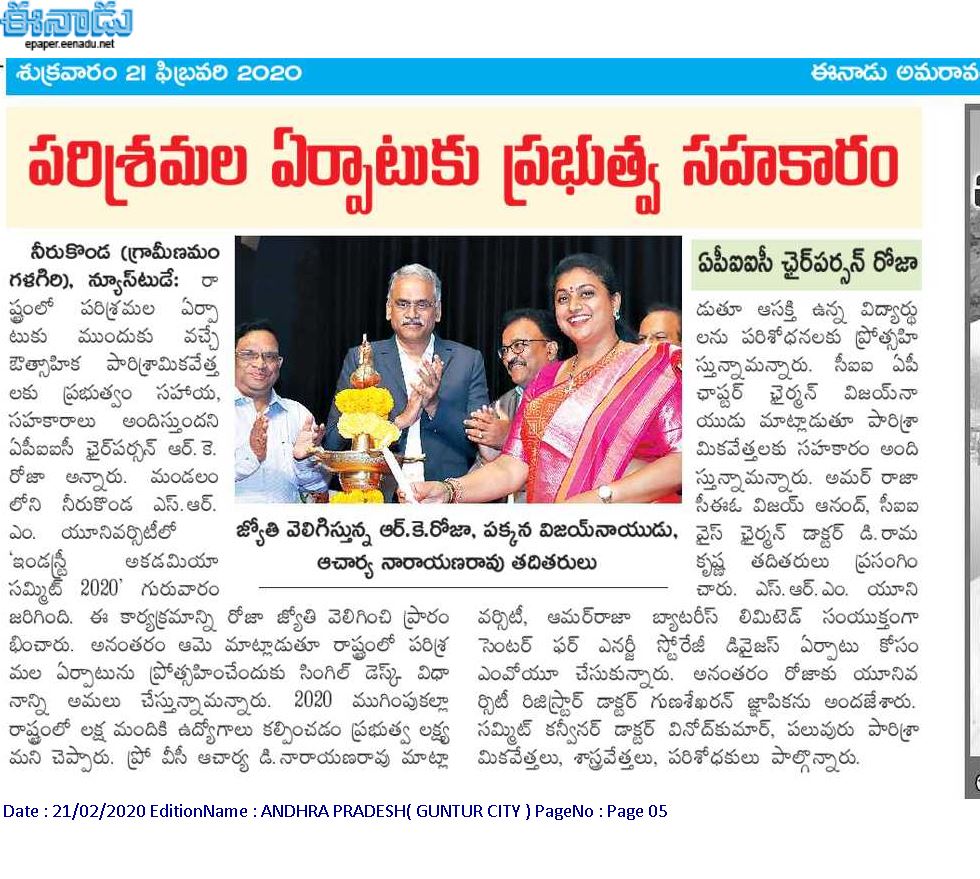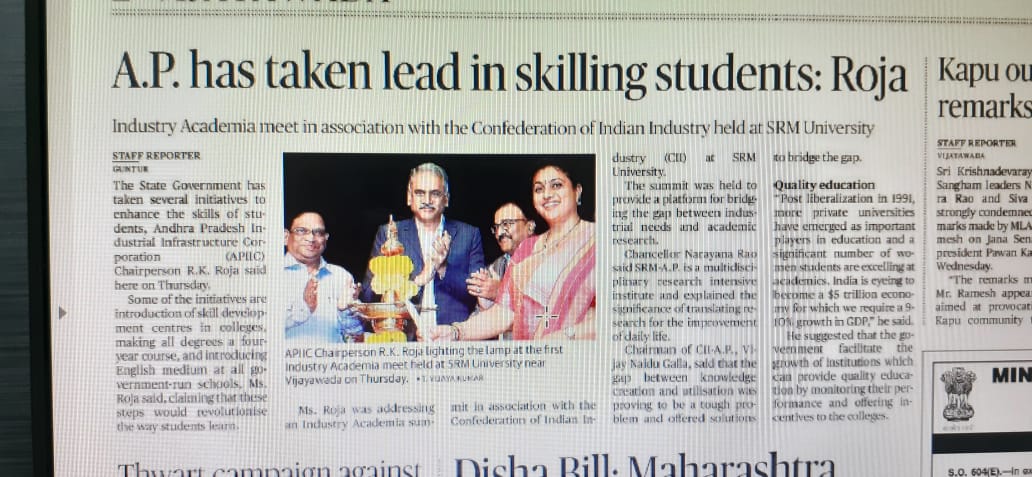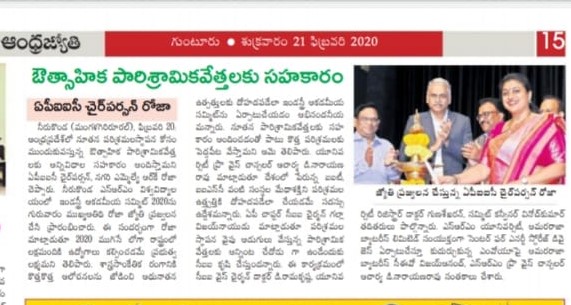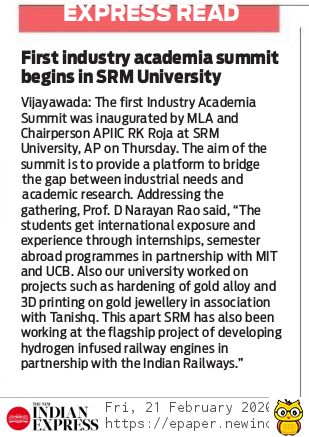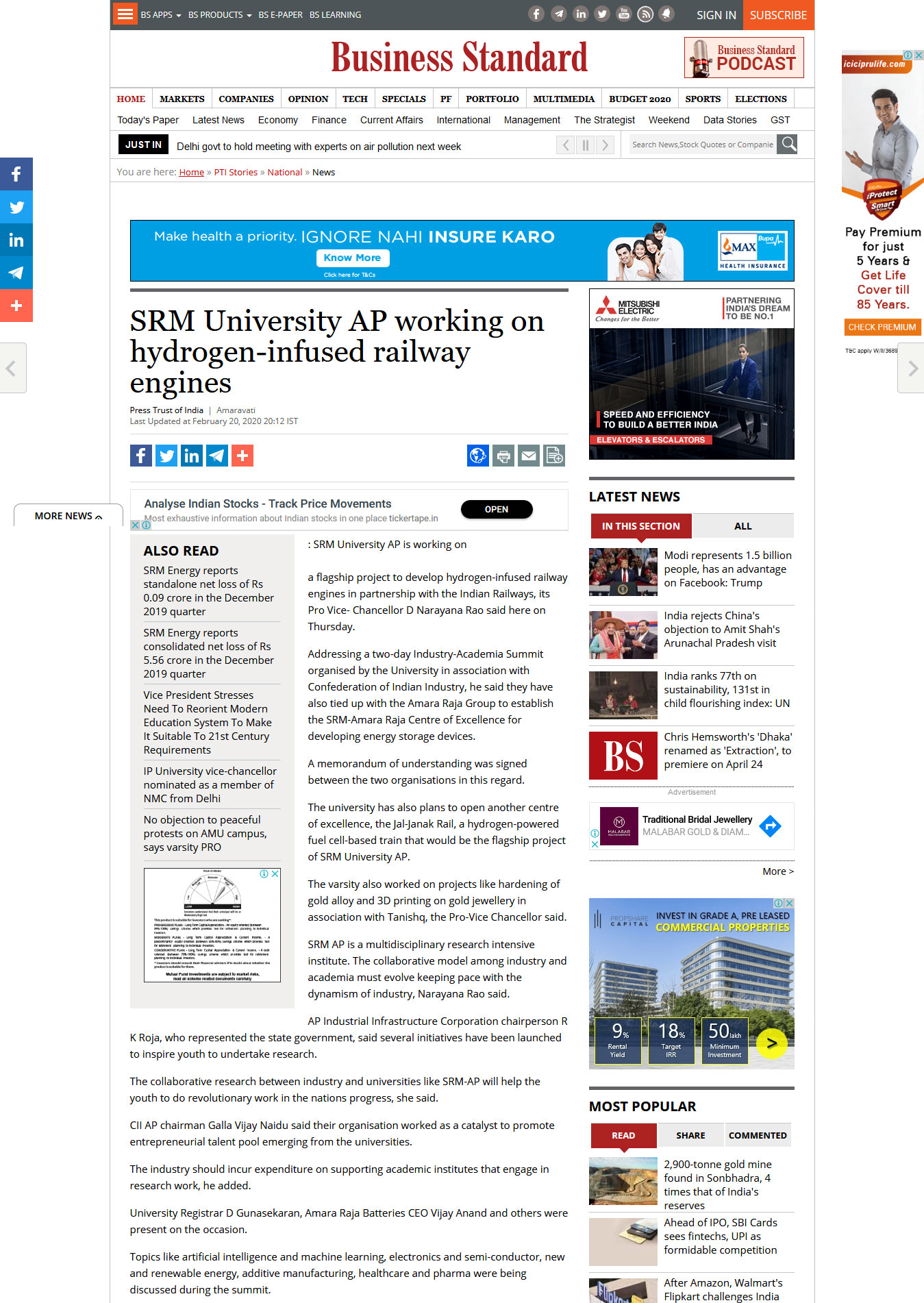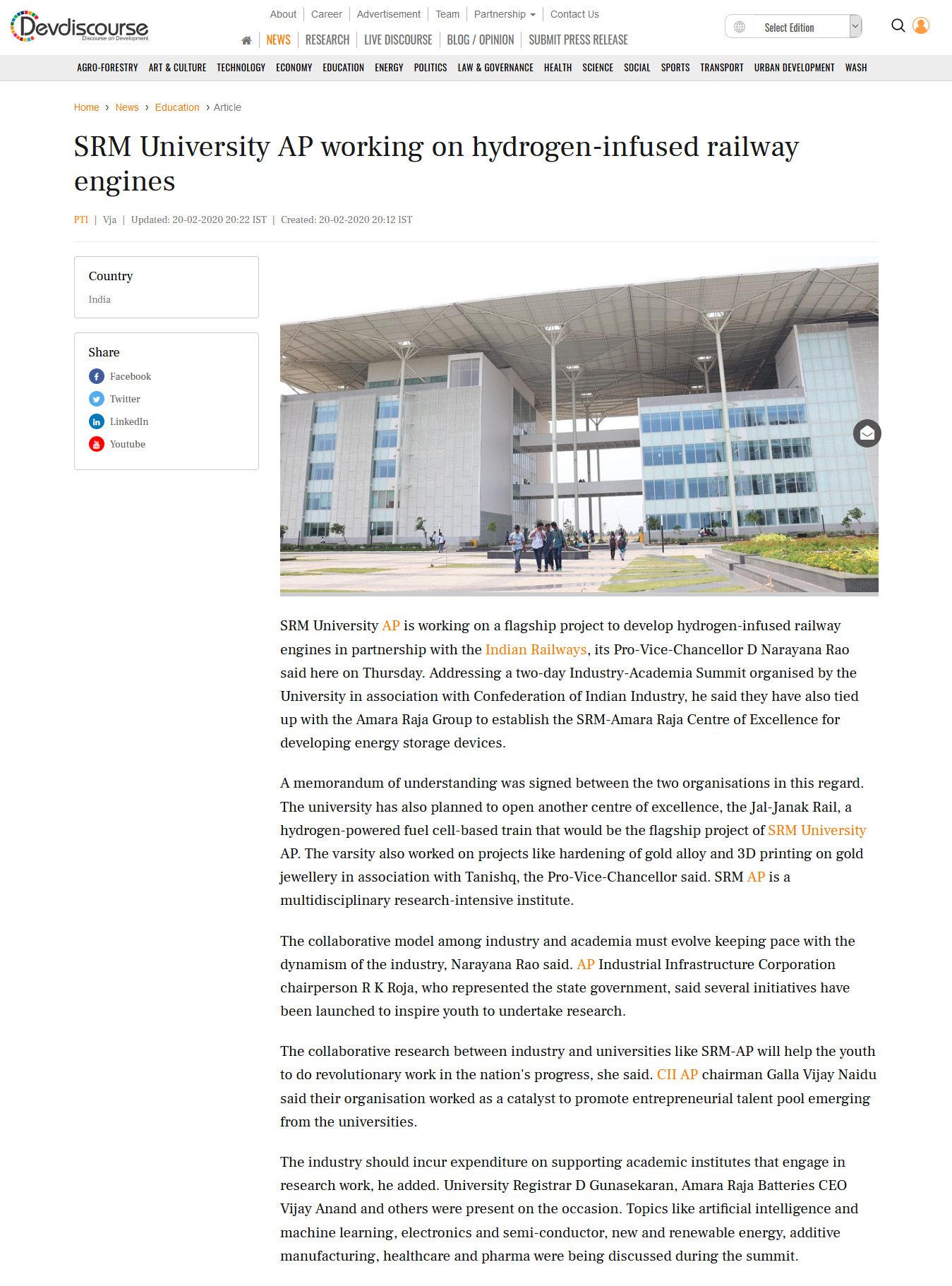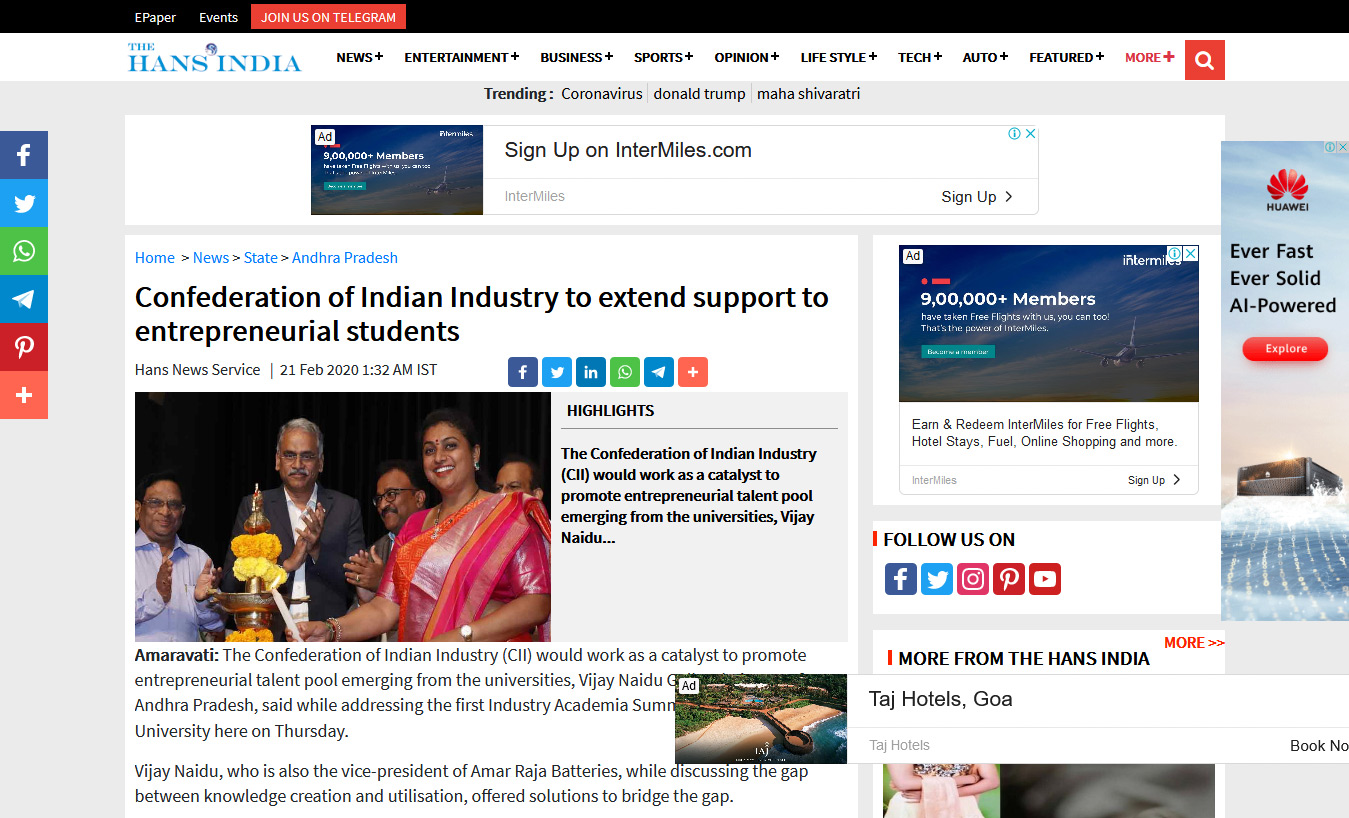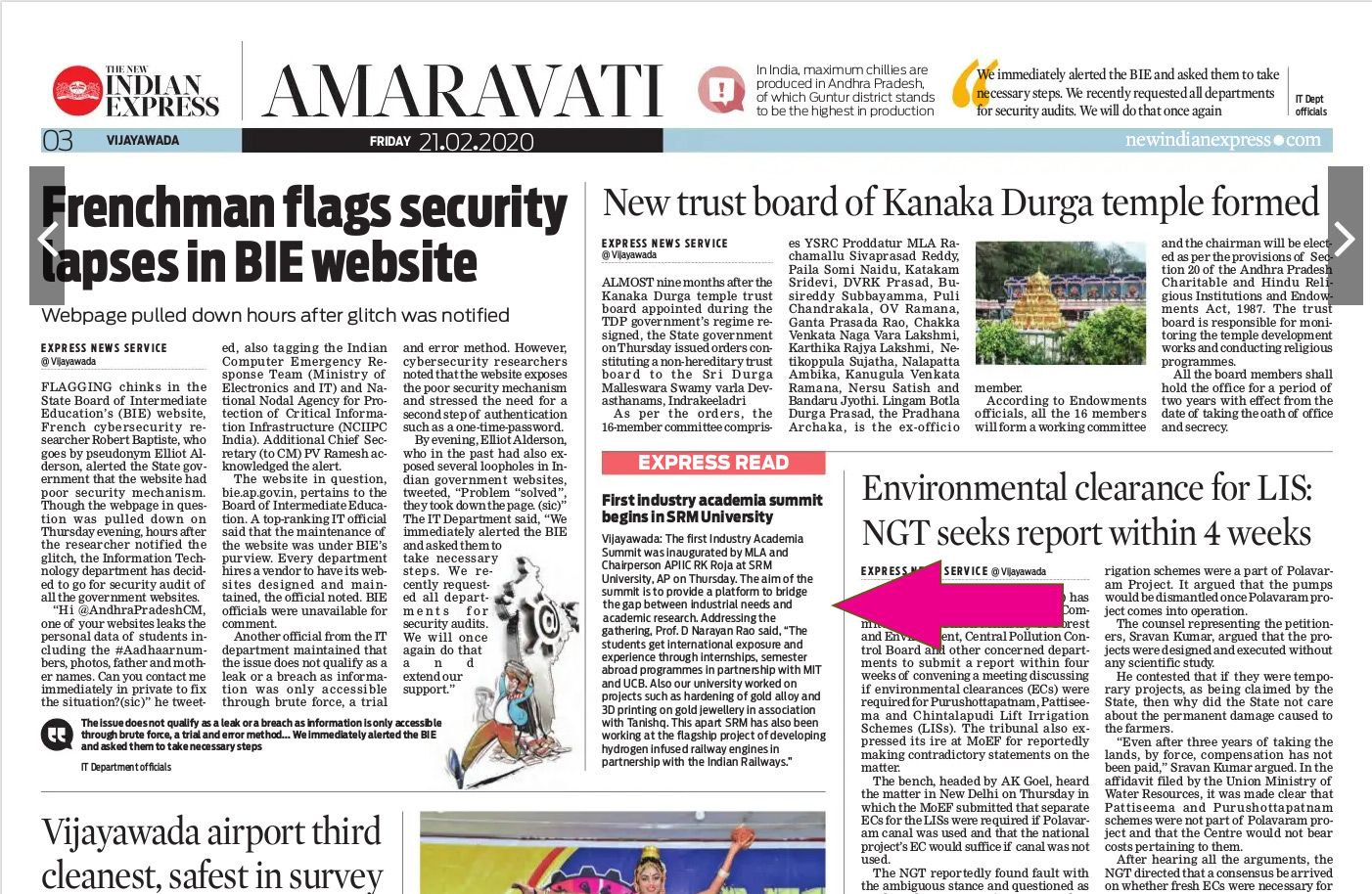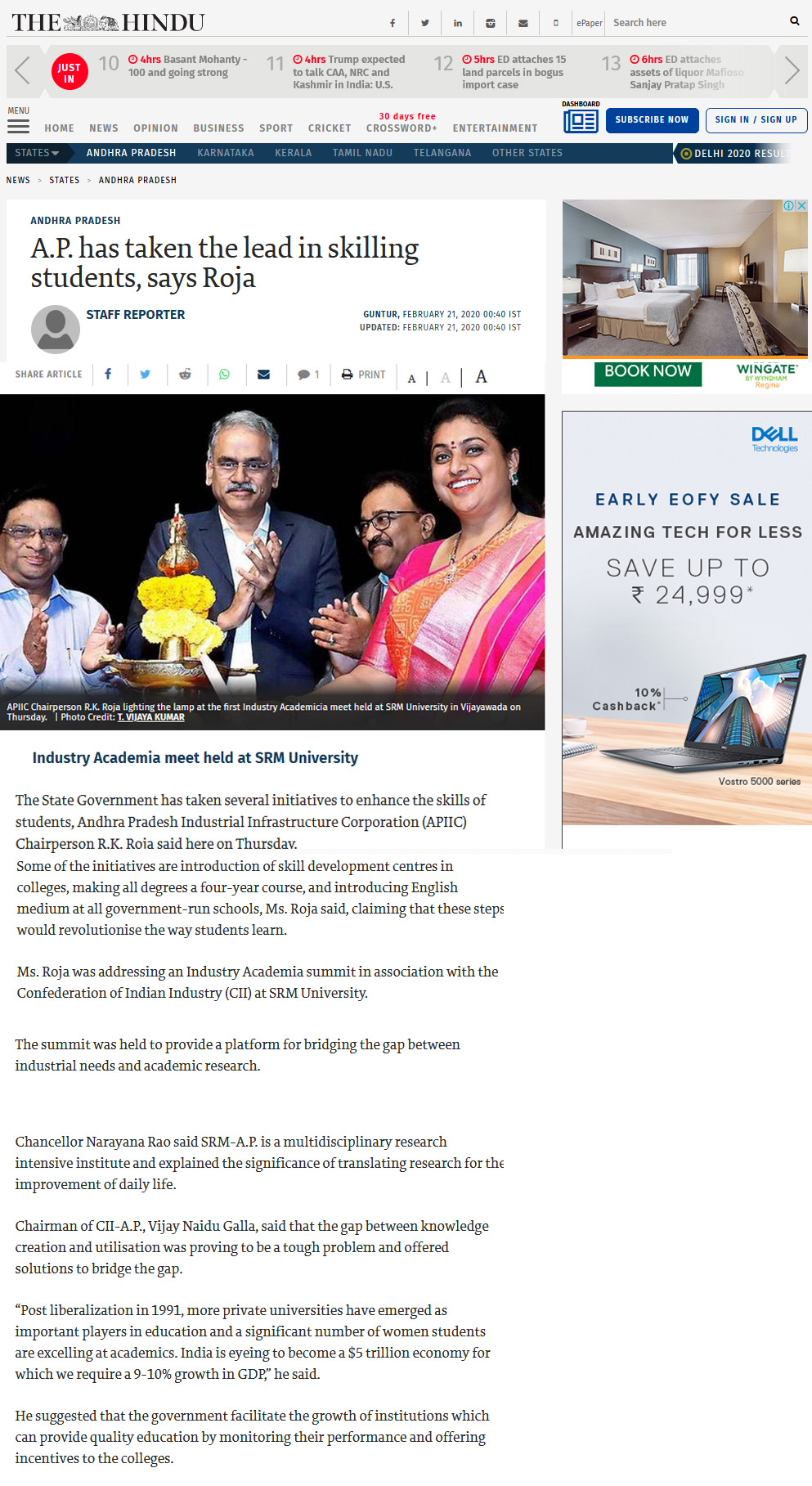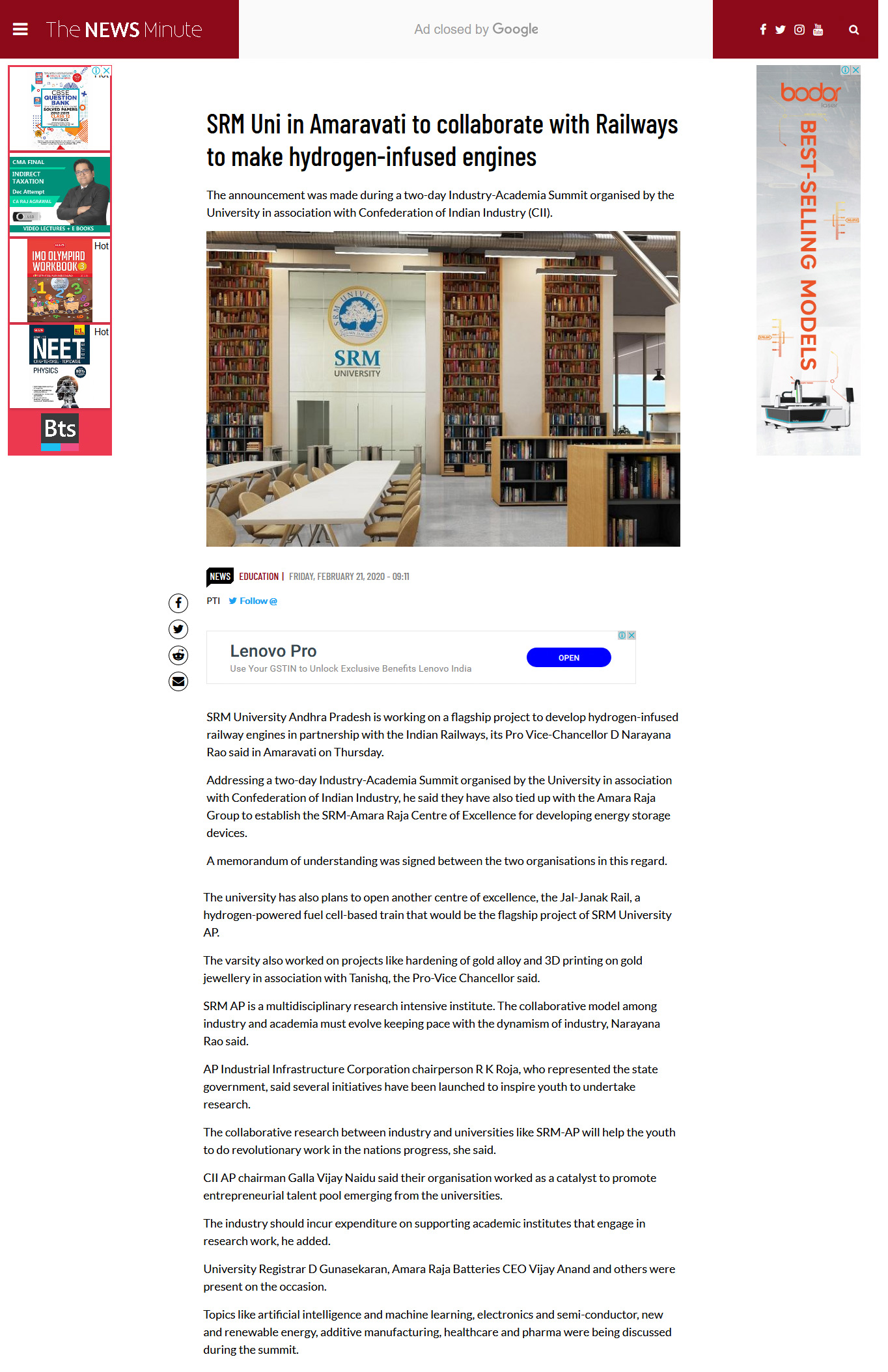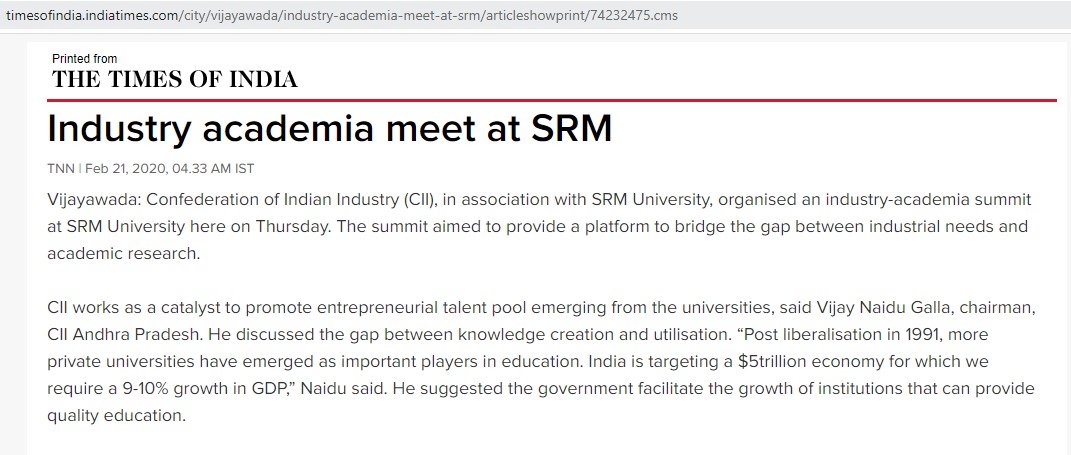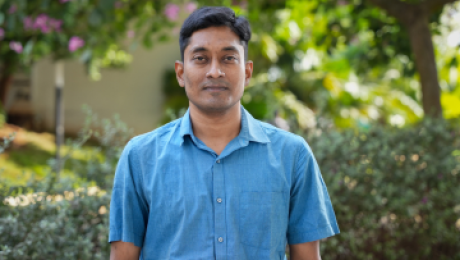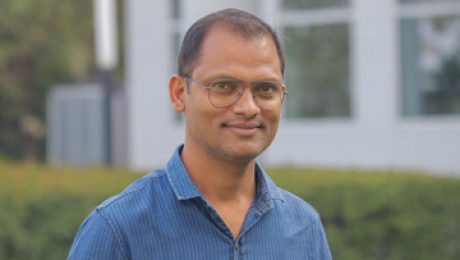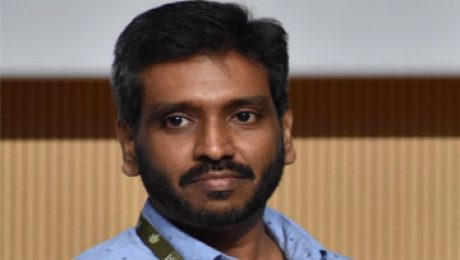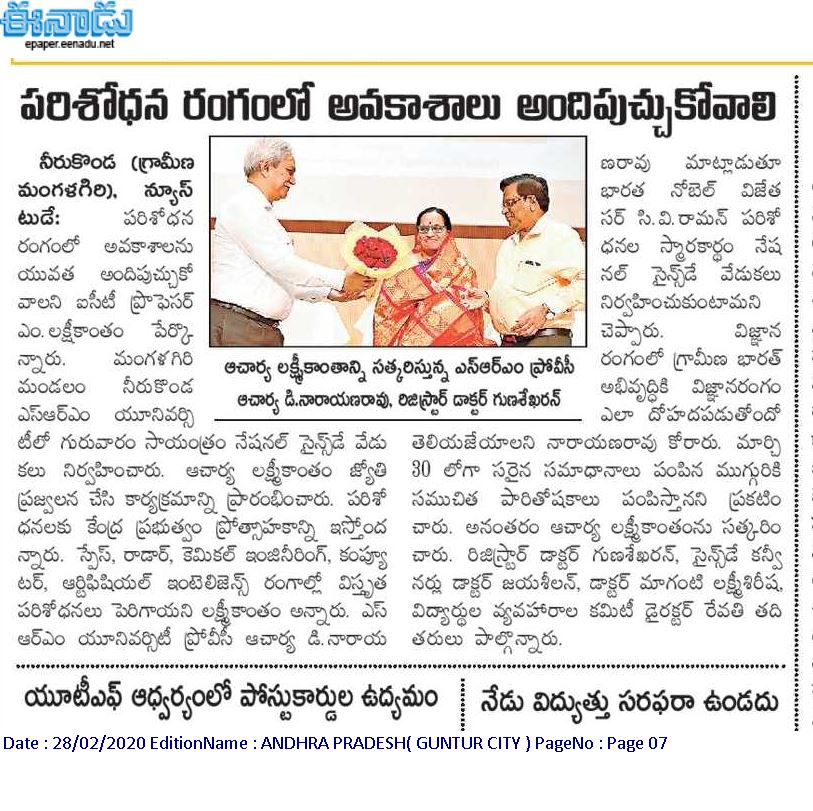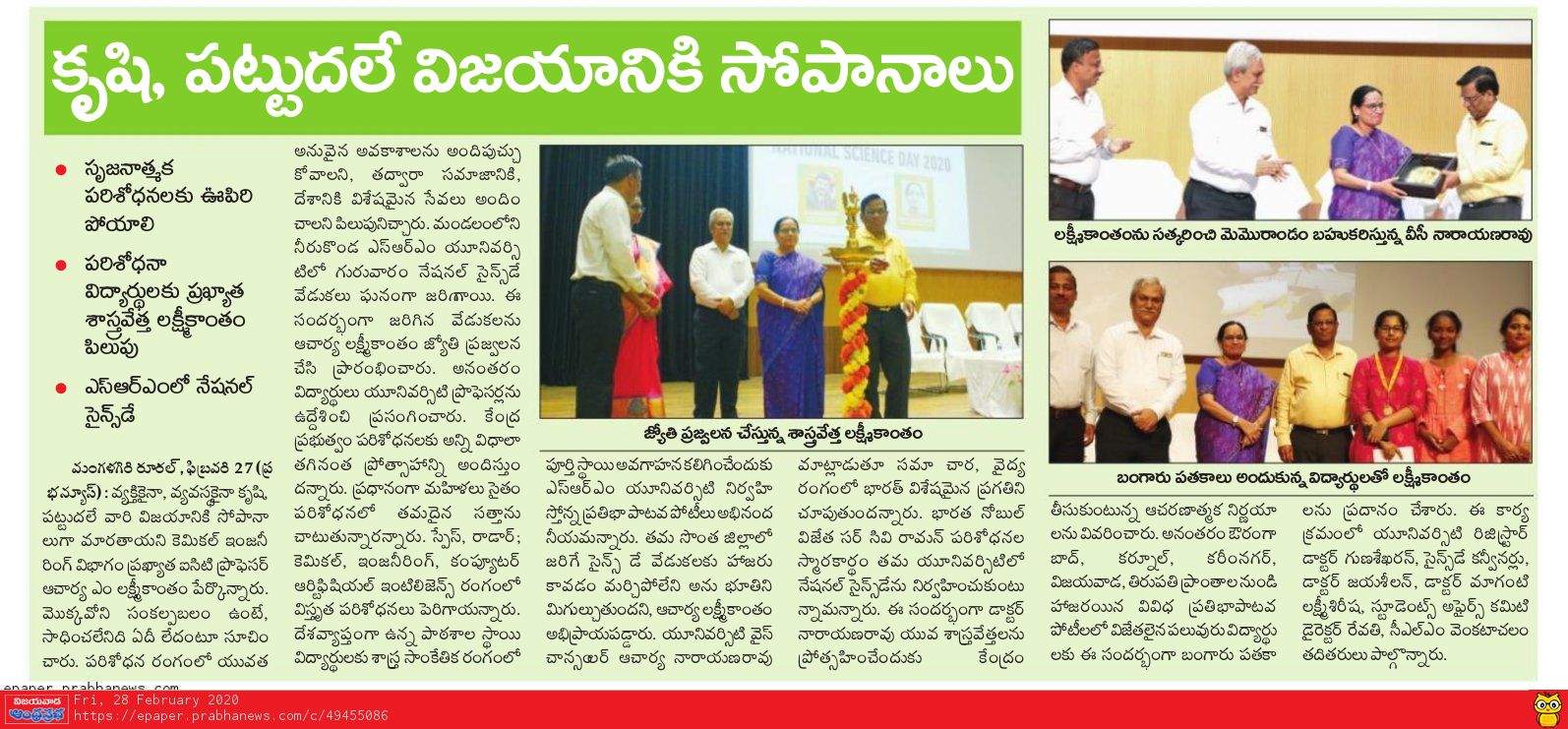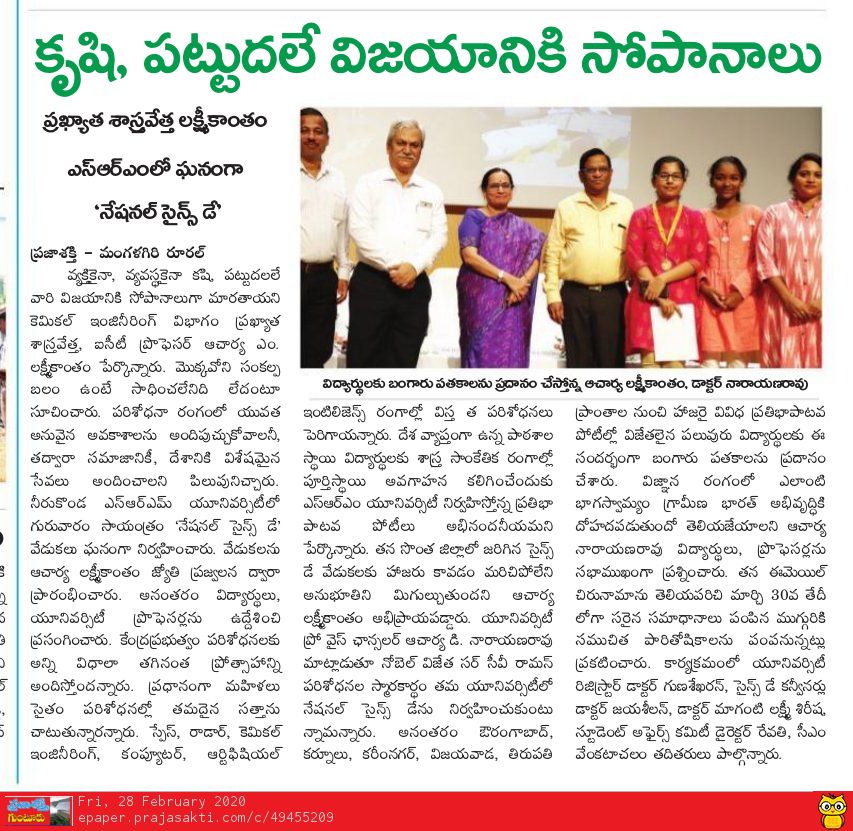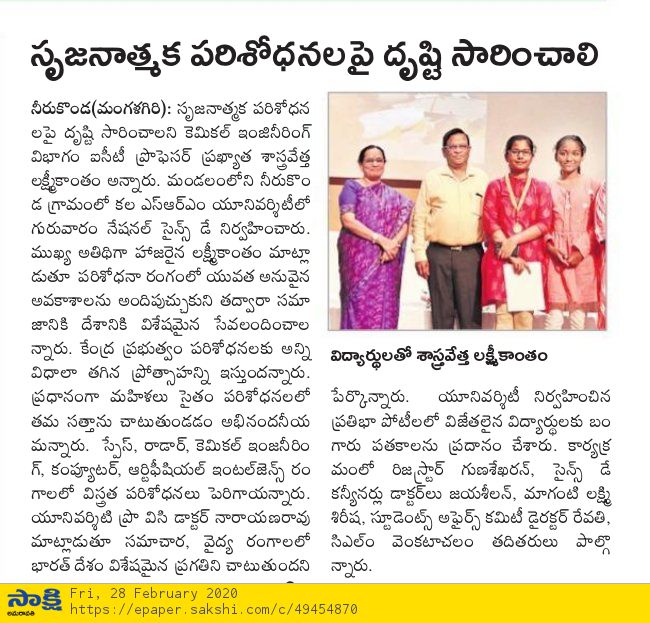Prof G S VinodKumar
- Published in Faculty, ME Faculty, Professor, SEAS
“A sound mind is in a sound body”
“Yoga & Meditation Training Programme” at SRM University-AP
A famous Arabian Proverb says, “He who has health has hope and he who has hope has everything.” Comprising with that, the National Service Scheme Cell of SRM University-AP has taken a holistic initiative towards its students, staff and faculty by organising an eight-week “Yoga & Meditation Training Programme” in collaboration with the Heartfulness Institute, Hyderabad. The inaugural session was graced by the presence of Prof. D. Narayana Rao, Pro-Vice Chancellor; Dr. D. Gunasekaran, Registrar; Dr. A. Lakshmana Rao, Assistant Professor, Department of Commerce and NSS Coordinator; Dr. Venkata N Nori, Associate Professor, Department of Mechanical Engineering and in house yoga trainer for boys; Dr. Ajitha, Instructor, Department of Business Administration and in house trainer of yoga for girls. Sri N. L. V. Pandu Ranga Prasad, social worker and an associate of Shri Ram Chandra Mission, has honoured the university with his presence as a Chief Guest in this event.
 Eminent Dignitaries at the Inaugural Ceremony
Eminent Dignitaries at the Inaugural Ceremony Pro-VC Honouring the Chief Guest
Pro-VC Honouring the Chief Guest In his opening statement, Prof. D. Narayana Rao stated the benefits of yoga in a scientific way. He mentioned that it had been already proven by various research studies that regular practice of yoga and meditation enhances levels of a particular messenger molecule in brain which in result enhances brain activity. The enhanced brain activity makes a powerful impact on one’s personality development. It can be maintained very easily with one session of yoga per week.
In his spirited speech, Sri Prasad stated various usefulness of yoga and meditation in everyone’s life. He said, “Yoga helps one in self-realisation. It takes away the negativity and fills with positive energy. This helps people to concentrate on their life and goals.” He also spoke on how famous personalities like Ram Nath Kobind, P V Sindhu, Rohit Sharma were benefitted by yoga and meditation. He further said that it is an essential tool for every person which helps in regulating one’s mind, thoughts and behaviour. Yoga and meditation help in becoming a good citizen for the nation and for personal developments also.
 Mr. Prasad Speaking on the Importance of the Meditation
Mr. Prasad Speaking on the Importance of the Meditation  Registrar Addressing the Audience
Registrar Addressing the Audience Dr. Gunasekaran reminded that yoga is a great gift from our forefathers. He said, “Yoga was initiated in our country, yet we have neglected it for years. A man is made of many values and virtues, but he is not always aware of it. Meditation is the medium which helps one to identify oneself.” The Inaugural Ceremony ended with a brief meditation session led by Dr. Nori followed by the vote of thanks.
- Published in Events
Dr. Atik’s Initiative on Better Understanding of Graphs using Matrices
SERB Project in Mathematics
Dr. Fouzul Atik, Assistant Professor at the Department of Mathematics in SRM University-AP, Andhra Pradesh has received a prestigious Start-up Research Grant (SRG) from Science and Engineering Research Board (SERB), Govt. of India.
Objective of the Grant:
This is a Start-up Research Grant (SRG) has a particular objective to assist researchers to start off their research career in a new institution. This two-year grant ushers in researchers in the domain of research from where they can escalate to the mainstream core research grants.
Selection and Nature of Support:
The selection for this grant is highly competitive and is based on the profile of the applicant and his proposed research plan. Nationwide only 500 grants are awarded per year across all subject areas.
The one-time research grant will cover equipment, manpower, consumables, travel and contingency apart from overheads. Applicant has the flexibility to propose budget under various heads as per requirement.
About Dr. Fouzul Atik’s Project:
In his project titled as “Characterization of graphs by spectra of its distance and resistance matrix and some problems related to matrix theory and graph theory”, Dr. Atik is initiating the investigation of different properties of graphs with the help of several matrices associated with it. “In this project we will focus on the distance matrix and resistance matrix of graphs. Many challenging problems are there which are equally important in the fields of graph theory and matrix theory. We will try to solve few of them in this project.” Dr. Atik said.
Reference:
SERB, India – http://www.serb.gov.in/home.php
SRG – http://www.serb.gov.in/srgg.php
Dr. Fouzul Atik- https://srmap.edu.in/faculty/dr-fouzul-atik/
- Published in News
National Science Day 2020
“Invention of technology is a result of teamwork”- Prof. M. Lakshmi Kantham
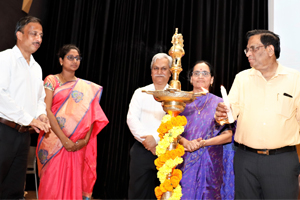 Lamp lighting ceremony to inaugurate National Science Day 2020
Lamp lighting ceremony to inaugurate National Science Day 2020On the eve of National Science Day, faculty, students, and staff of SRM AP assemble to celebrate the spirit of continued research and inventions which helps the world move forward. National Science Day is observed to acknowledge the discovery of Raman Effect by CV Raman in 1928. Aligned to the theme of 2020, “Women in Science”, Prof. M. Lakshmi Kantham, Distinguished professor at Institution of Chemical Technology, Mumbai graced the inaugural ceremony as the Guest of Honour. Dr. D. Narayana Rao, Pro Vice-Chancellor, Dr. D. Gunasekaran, Registrar, and Prof. Jayaseelan Murugaiyan, along with Dr. Lakshmi Sirisha Maganti, Conveners, also presided the ceremony.
The distinguished guests paid homage to Prof. CV Raman and revered on his endless contribution to the field of scientific applications. Dr. D. Narayana Rao, Pro Vice-Chancellor expressed his regards towards Prof. CV Raman by explaining the plethora of applications of Raman Effect. He says, “One needs to be passionate, committed, and confident like Prof. CV Raman to excel in any field. Science Day is observed to recognize the scientists’ contribution to society, to provide a platform to the young scientists and kindle their interest in science, to create awareness regarding the significance of science and its applications, to discuss issues, and to popularize the opportunities offered by science.”
 Prof. Narayana Rao addressing the gathering
Prof. Narayana Rao addressing the gathering Prof. M. Lakshmi Kantham takes the dais
Prof. M. Lakshmi Kantham takes the daisProf. M. Lakshmi Kantham takes the dais to speak about women’s contribution to science. She remembered the great works of women who contributed to science and technology. She recalled Anandibai Gopalrao Joshi, the first woman physician, Anna Mani, Indian physicist, and meteorologist, Ashima Chatterjee, inventor of anti-malarial drugs, to name a few. She used this opportunity to spread awareness among young students to avail of the benefits of various fellowship programs offered by the government to female students. She also identifies that the challenges witnessed by our country can be solved by encouraging more female students along with males to indulge in research. In her words, “Invention of technology is a result of teamwork. Passion, perfection, and persistence are key to research whereas hard work and innovation lead to success”.
27 schools were invited to the campus of SRM AP. Young students from 8th and 9th standard flocked with their teachers to participate in various activities designed for them. The schools exhibited their science projects in groups. The students also participated in a science quiz, followed by oral presentation competition where they were to speak for two minutes on random topics. The winners were awarded gold and silver medals by Prof. Lakshmi Kantham to encourage the students to further excel in their careers and contribute to scientific research and innovations in the future.
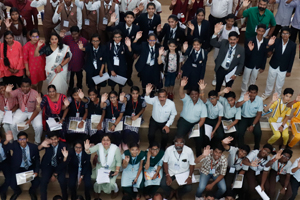 School students attending National Science Day
School students attending National Science DayPicture credit (photography society)
S.AKHIL
AP18110010202
CSE-D
N.Hemanth
AP18110030053
Mechanical
D SIVASAI
AP18110010075
CSE-B
- Published in Events, Research Events
AutoNxt Automation visits campus
Interactive session with industrial inventors
 World’s First Electric, Autonomous Tractor
World’s First Electric, Autonomous TractorKaustubh Dhonde, CEO, Swadeep Pillarisetti, Advisor and Board Director, Sachin Gowda, Embedded Engineer, and Aswanth Mulupuri, Intern, Department of Automation of AutoNxt Automation – an innovative Mumbai based startup, visited SRM University AP, Andhra Pradesh for a two-day program as a part of the National Science Day celebration at the campus. The company demonstrated their latest technological marvel, the World’s First Electric, Autonomous Tractor. “A lot of research is conducted globally with multiple companies working on the automation of on-road vehicles. However, off-road vehicles’ automation has hardly been touched upon previously, although there are less variables being controlled environments like farms, industrial plants, etc where it is more feasible a solution”, says Mr. Swadeep who has been advising the company which has brought about a revolutionary breakthrough in the domain of Indian agriculture.
Some of the exceptional features of the Electric Automated Tractor include fully electric drivetrain, low NVH (Noise, Vibration and Harshness) levels, mobile application for interaction with the tractor, live tracking, geo fencing capabilities, battery and system status reports on mobile app, obstacle detection technology and optional automatic hydraulic control of implements. The company is also planning to develop a common charging point that will use free energy sources.
 Students marveling at the automated tractor
Students marveling at the automated tractor
Demonstration by the CEO
AutoNxt Automation has created its niche by offering cost-effective and energy-efficient solutions to farming problems. Mr. Kaustubh believes “It is important that technology reaches out to the entire farmer class”. He further explains the crises of the Indian agricultural system that can be resolved using the Electric Automated Tractors, “The harvesting timeframe is narrow which increases the demand of skilled labour during this season, exponentially enhancing the cumulative cost of farming. The fully automated tractors embedded with camera identification systems and sensors reduce the operational expenses up to 4 times. Also, the IoT sensors give real-time feedbacks ensuring accuracy in tilling, ploughing, and spraying insecticide.”
The representatives of the company held a demonstrative session with the students and faculty on 26th February 2020, where they introduced the tractor and explained its technological viabilities. An interactive session was also held with the students on the same day. The session enabled the students to identify the practical applications of their acquired theoretical knowledge. The entrepreneurs inspired the students to create an impactful change that will eventually benefit society as a whole. Also, it creates an opportunity for them to be closely associated with people from the industry as well as the research domain. On the following day, a presentation was made to the faculty members of SRM AP to trigger discussions on technologies used by the Electric Automated Tractor. In the end, Mr. Kaustubh and Mr. Swadeep expressed their intent to involve students to work on real-time projects with the company, along with taking assistance from the faculty members to overcome hurdles pertaining to AI/ML technologies. Mr. Swadeep says, “The students will be exposed to real case studies, contribute to the improvement of the country, and in the process earn many accolades”.

Sachin Gowda interacting with the students
- Published in Mechanical Engineering NEWS, News


